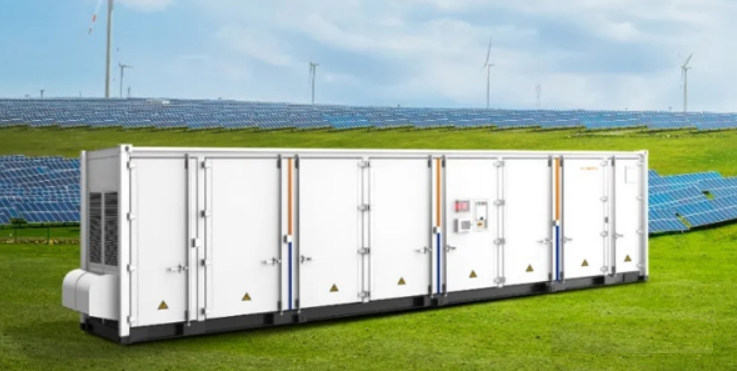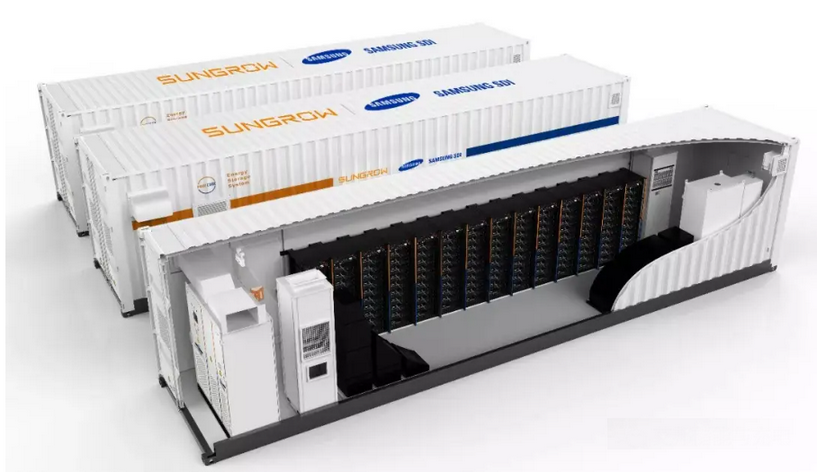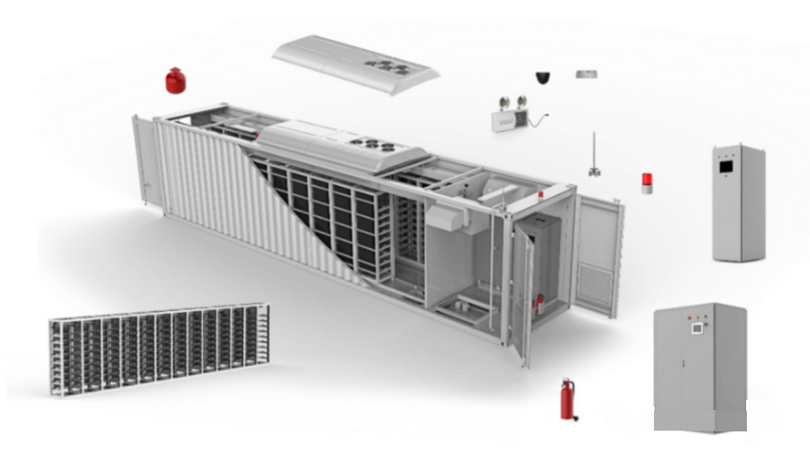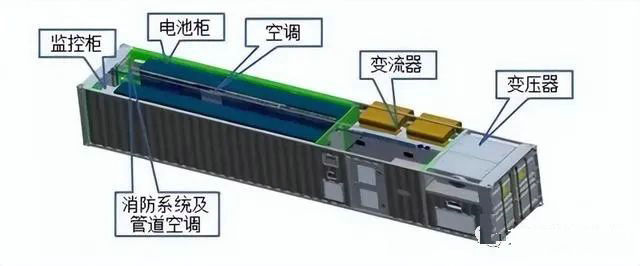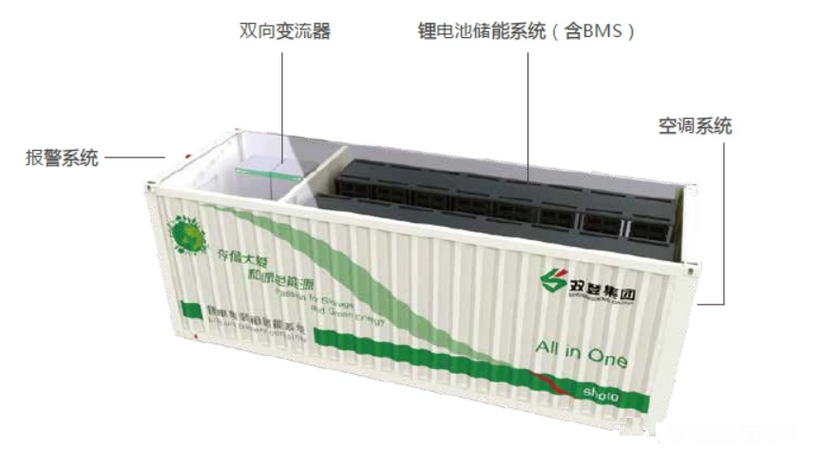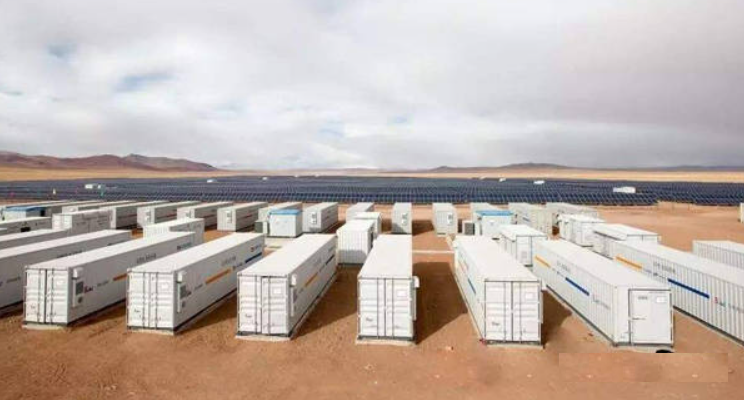| Read the classification, design and composition of energy storage containers |
| Release time:2023-02-03 08:49:11| Viewed: |
Read the classification, design and composition of energy storage containers
Container energy storage system (CESS) is an integrated energy storage system developed according to the needs of the mobile energy storage market. Its internal integration includes battery cabinet, lithium battery management system (BMS), container dynamic loop monitoring system, and can integrate energy storage converter and energy management system according to customer needs.
The container energy storage system has the characteristics of simplified infrastructure construction cost, short construction period, high degree of modularization, convenient transportation and installation, and can be applied to thermal power, wind power, solar power and other power stations or islands, communities, schools, scientific research institutions, factories, large load centers and other applications.
Container classification
Classification by material used Aluminum alloy container: its advantages are light weight, beautiful appearance, corrosion resistance, good elasticity, convenient processing, low processing and repair costs, and long service life; The disadvantages are high cost and poor welding performance;
Steel container: its advantages are high strength, firm structure, high weldability, good water tightness and low price; The disadvantages are heavy weight and poor corrosion resistance;
Glass fiber reinforced plastic container: its advantages are high strength, good rigidity, large content, good heat insulation, corrosion resistance, chemical resistance, easy cleaning and easy repair; The disadvantages are large weight, easy aging and low strength at the place where bolts are screwed.
The design of energy storage container is mainly divided into two parts
1. Battery compartment: The battery compartment mainly includes battery, battery rack, BMS control cabinet, heptafluoropropane fire cabinet, heat dissipation air conditioning, smoke lighting, monitoring camera, etc. The battery needs to be equipped with corresponding BMS management system.
The type of battery can be iron lithium battery, lithium battery, lead carbon battery and lead acid battery. The cooling air conditioner adjusts in real time according to the temperature in the warehouse. The monitoring camera can remotely monitor the operation status of the equipment in the warehouse. It can form a remote client to monitor and manage the running status and battery status of the equipment in the warehouse through the client or app.
2. Equipment warehouse: The equipment warehouse mainly includes PCS and EMS control cabinet. PCS can control the charging and discharging process, conduct AC/DC conversion, and directly supply power to AC load without power grid.
In the application of energy storage system, the function and function of EMS are very important. In the distribution network, EMS collects the real-time power status of the power grid and monitors the change of load power in real time through communication with smart meters. Control automatic generation and evaluate the power system status.
In a 1MWh system, the ratio of PCS to battery can be 1:1 or 1:4 (energy storage PCS250kWh, battery 1MWh).
3. The heat dissipation design of 1MW container-type converter adopts the design of forward split and rear air outlet. This design is applicable to the energy storage power station where all PCSs are placed in the same container. The wiring, maintenance channel and heat dissipation design of the distribution system inside the container are integrated and optimized to facilitate long-distance transportation and reduce the cost of post-maintenance.
Composition of container energy storage system
Taking 1MW/1MWh container energy storage system as an example, the system is generally composed of energy storage battery system, monitoring system, battery management unit, special fire protection system, special air conditioning, energy storage converter and isolation transformer, and finally integrated into a 40-foot container.
Battery system: It is mainly composed of battery cells in series and parallel. At first, more than ten groups of battery cells are connected in series and parallel to form a battery box, and then the battery box is connected in series to form a battery string and raise the system voltage. Finally, the battery string is connected in parallel to improve the system capacity and installed in the battery cabinet.
Monitoring system: It mainly realizes the functions of external communication, network data monitoring and data acquisition, analysis and processing to ensure accurate data monitoring, high precision of voltage and current sampling, fast data synchronization rate and fast execution of remote control commands. The battery management unit has high-precision single voltage detection and current detection functions to ensure the voltage balance of cell modules, avoid the circulation between battery modules and affect the system operation efficiency.
Fire fighting system: In order to ensure the safety of the system, the container is equipped with a special fire fighting and air conditioning system
The fire alarm is sensed through smoke sensors, temperature sensors, humidity sensors, emergency lights and other safety devices, and the fire is automatically extinguished; According to the external environment temperature, the special air conditioning system controls the air conditioning cooling and heating system through the thermal management strategy to ensure that the temperature in the container is in the appropriate range and extend the service life of the battery.
Energy storage converter: It is an energy conversion unit that converts battery DC into three-phase AC, which can operate in grid-connected and off-grid mode. In grid-connected mode, the converter interacts with the power grid according to the power command issued by the upper dispatching;
In off-grid mode, the energy storage converter can provide voltage and frequency support for the plant load and provide black-start power for some renewable energy.
The outlet of the energy storage converter is connected with the isolation transformer to completely insulate the primary side and the secondary side, thus ensuring the safety of the container system to the greatest extent.
Advantages of container-type energy storage system
1. The energy storage container has good anti-corrosion, fireproof, waterproof, dust-proof (wind-sand), shock-proof, UV-proof, anti-theft and other functions to ensure that it will not be corroded within 25 years.
2. The container shell structure, thermal insulation materials, interior and exterior decoration materials are all made of flame retardant materials.
3. The air inlet and outlet of the container and the air inlet of the equipment can be easily replaced with the standard ventilation filter screen. At the same time, it can effectively prevent dust from entering the container when encountering strong wind and sand.
4. The shockproof function must ensure that the mechanical strength of the container and its internal equipment meet the requirements under the conditions of transportation and earthquake, without deformation, abnormal function, vibration and other failures.
5. The anti-ultraviolet function must ensure that the properties of the materials inside and outside the container will not deteriorate due to ultraviolet radiation, and will not absorb ultraviolet heat, etc
7. The container standard unit has its own independent power supply system, temperature control system, thermal insulation system, flame retardant system, fire alarm system, mechanical interlocking system, escape system, emergency system, fire protection system and other automatic control and security systems.
Lithium battery container energy storage system
Lithium battery energy storage system can be divided into cabinet energy storage system and container energy storage system according to different installation forms.
As the energy storage system shifts to a longer duration, customers who purchase lithium battery energy storage systems will strengthen their demand for energy and electricity. Lithium battery container energy storage system is based on advanced lithium battery technology, equipped with standardized converter equipment and monitoring management system, which can better meet the growing demand for energy storage. |



